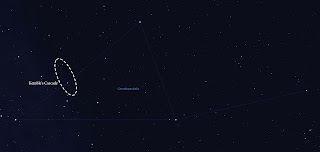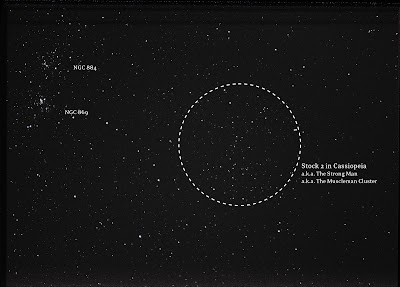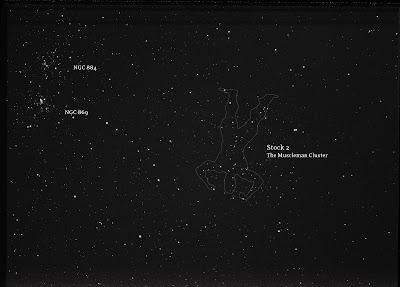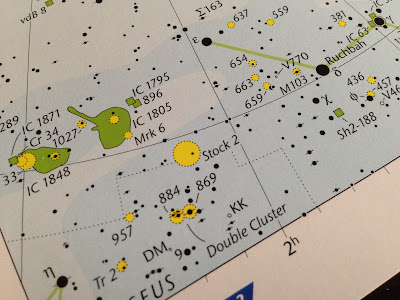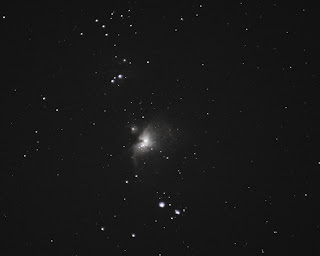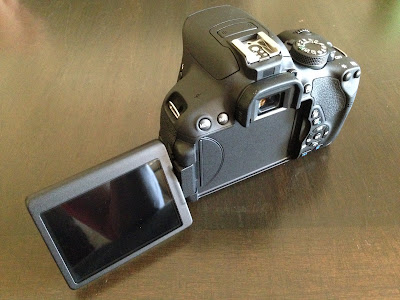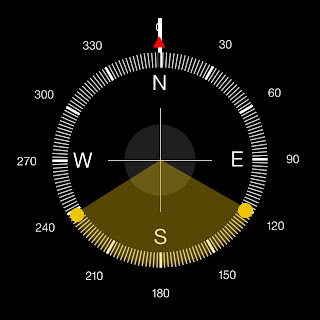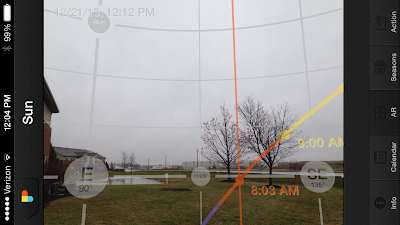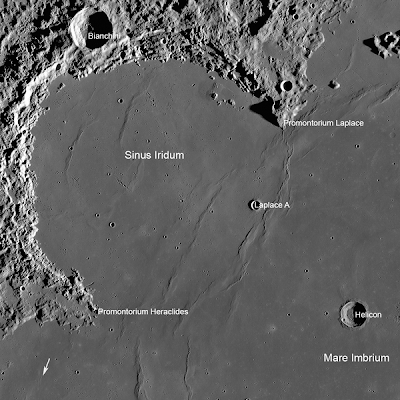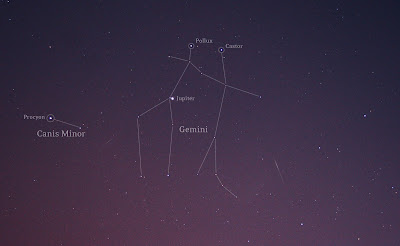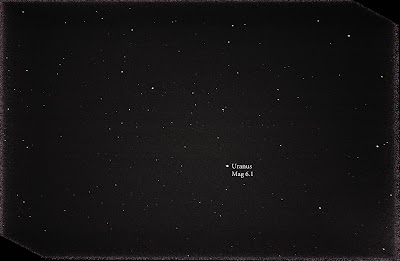Phil Dimpelfeld from the
Indiana Astronomical Society creates a Novice/Urban Observing List each month for newbies like myself with not-so-dark skies and not-so-powerful equipment.
December looks like fun, with a chance to take a closer look at some otherwise familiar objects (Polaris and Pleiades), and some objects that are brand new to me. Again, separation could be a bit of a problem, but I'll do the best I can!
Alpha Piscium, double star in Pisces, 02h 02.0m, +02° 46', mag = 4.2, 5.1, sep = 1.7"
Stock 2, open cluster in Cassiopeia, 02h 15.0m, +59° 16', mag = 4.4, size = 60.0'
Gamma Andromedae, double star in Andromeda, 02h 03.9m, +42° 20', mag = 2.3, 5.5, sep = 9.8"
Iota Trianguli, double star in Triangulum, 02h 12.4m, +30° 18', mag = 5.3, 6.9, sep = 3.9"
NGC 869 / NGC 884, the famed ”Double Cluster”, two open clusters in Perseus, 02h 19.0m, +57° 09', mag = 5.3 / 6.1, size = 29.0' / 29.0'
Alpha Ursa Minoris, ”Polaris”, double star in Ursa Minor, 02h 31.8m, +89° 16', mag = 2.0, 9.0, sep = 18.4"
M34, open cluster in Perseus, 2h 42.0m, 42° 47’, mag = 6.0, size = 35.0'
Beta Persei, ”Algol”, variable star in Perseus, 03h 08.2m, +40° 57', mag = 2.1-3.4
M45, the ”Pleiades” or ”Seven Sisters”, open cluster in Taurus, 03h 46.9m, +24° 07', mag = 1.2, size = 110'
”Kemble's Cascade”, nearly linear asterism in Camelopardalis, 03h 57m, 63° 00', mag = 5 to10, size = 120'
Challenge Object #1:
M77, galaxy in Cetus, 02h 42.7m, -00° 01', mag = 8.8, size = 6.9' x 5.9'
Challenge Object #2:
Comet ISON, eastern sky before dawn, check star charts for position


